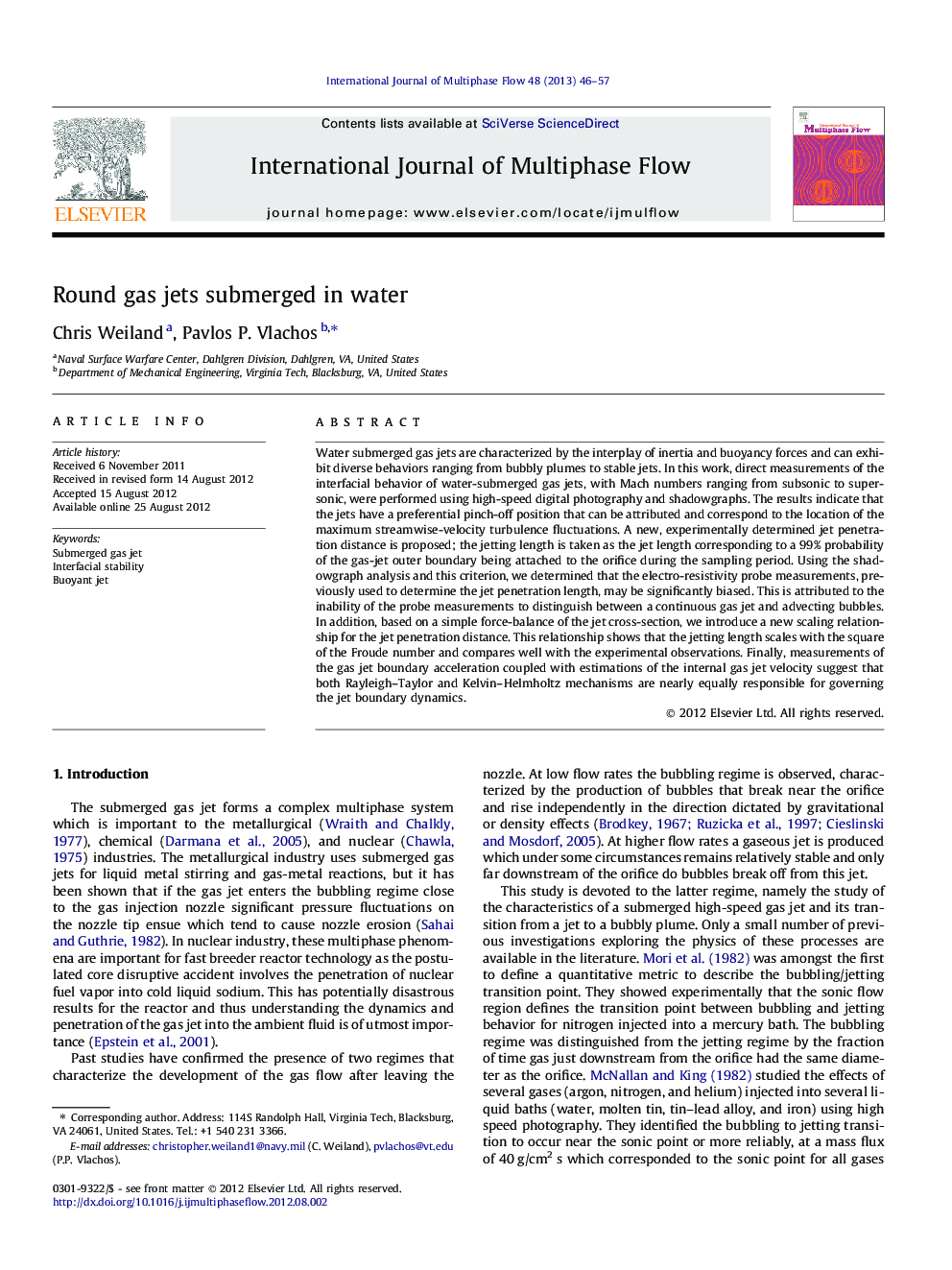| Article ID | Journal | Published Year | Pages | File Type |
|---|---|---|---|---|
| 666637 | International Journal of Multiphase Flow | 2013 | 12 Pages |
Water submerged gas jets are characterized by the interplay of inertia and buoyancy forces and can exhibit diverse behaviors ranging from bubbly plumes to stable jets. In this work, direct measurements of the interfacial behavior of water-submerged gas jets, with Mach numbers ranging from subsonic to supersonic, were performed using high-speed digital photography and shadowgraphs. The results indicate that the jets have a preferential pinch-off position that can be attributed and correspond to the location of the maximum streamwise-velocity turbulence fluctuations. A new, experimentally determined jet penetration distance is proposed; the jetting length is taken as the jet length corresponding to a 99% probability of the gas-jet outer boundary being attached to the orifice during the sampling period. Using the shadowgraph analysis and this criterion, we determined that the electro-resistivity probe measurements, previously used to determine the jet penetration length, may be significantly biased. This is attributed to the inability of the probe measurements to distinguish between a continuous gas jet and advecting bubbles. In addition, based on a simple force-balance of the jet cross-section, we introduce a new scaling relationship for the jet penetration distance. This relationship shows that the jetting length scales with the square of the Froude number and compares well with the experimental observations. Finally, measurements of the gas jet boundary acceleration coupled with estimations of the internal gas jet velocity suggest that both Rayleigh–Taylor and Kelvin–Helmholtz mechanisms are nearly equally responsible for governing the jet boundary dynamics.
► The jet penetration distance defined here is an improved metric for jetting length. ► The jet unsteadiness is a function of the Mach number and peaks near the sonic point. ► Instability mechanisms are in competition for driving mixing at the interface.
